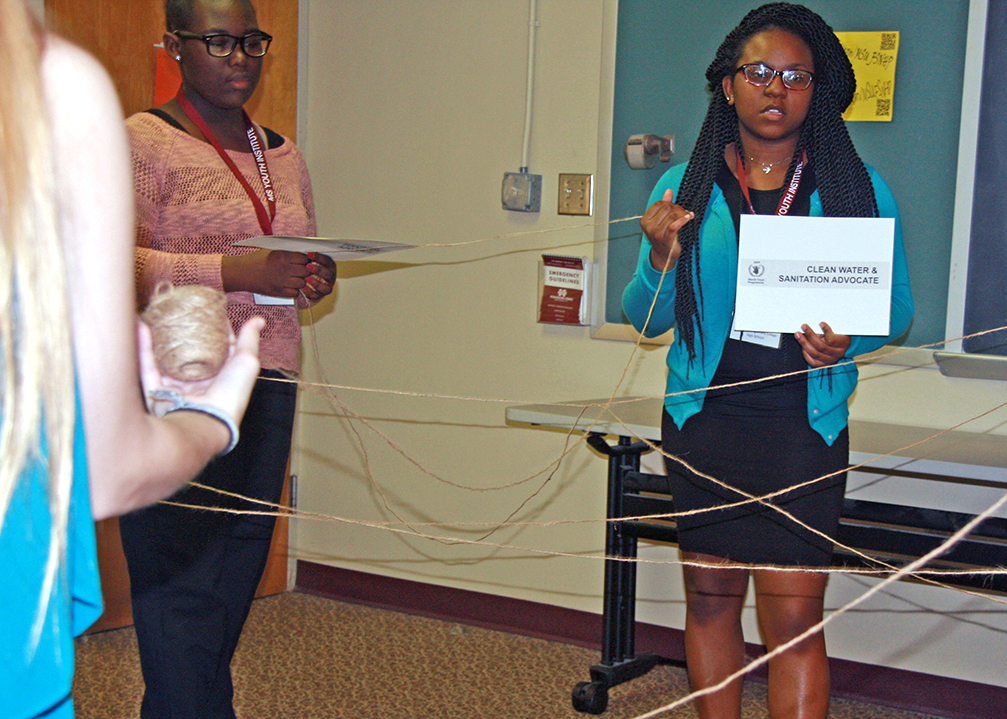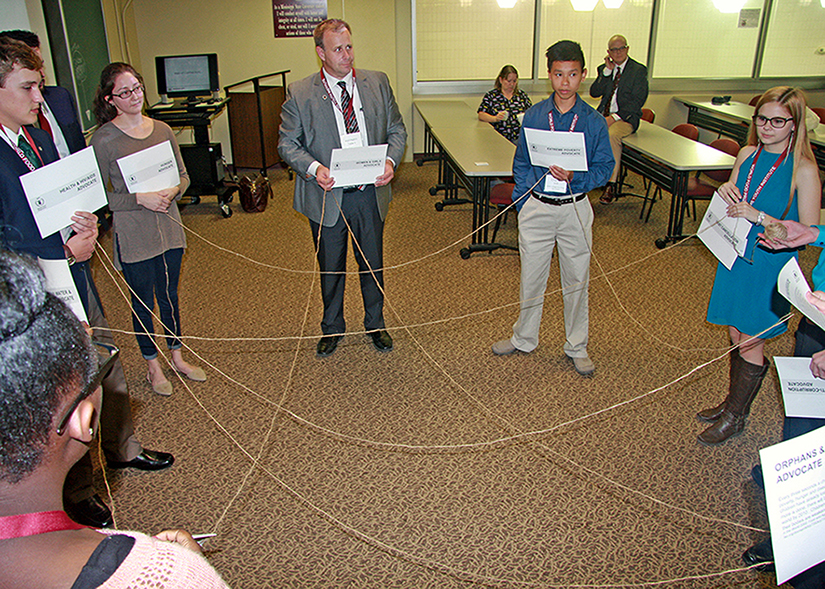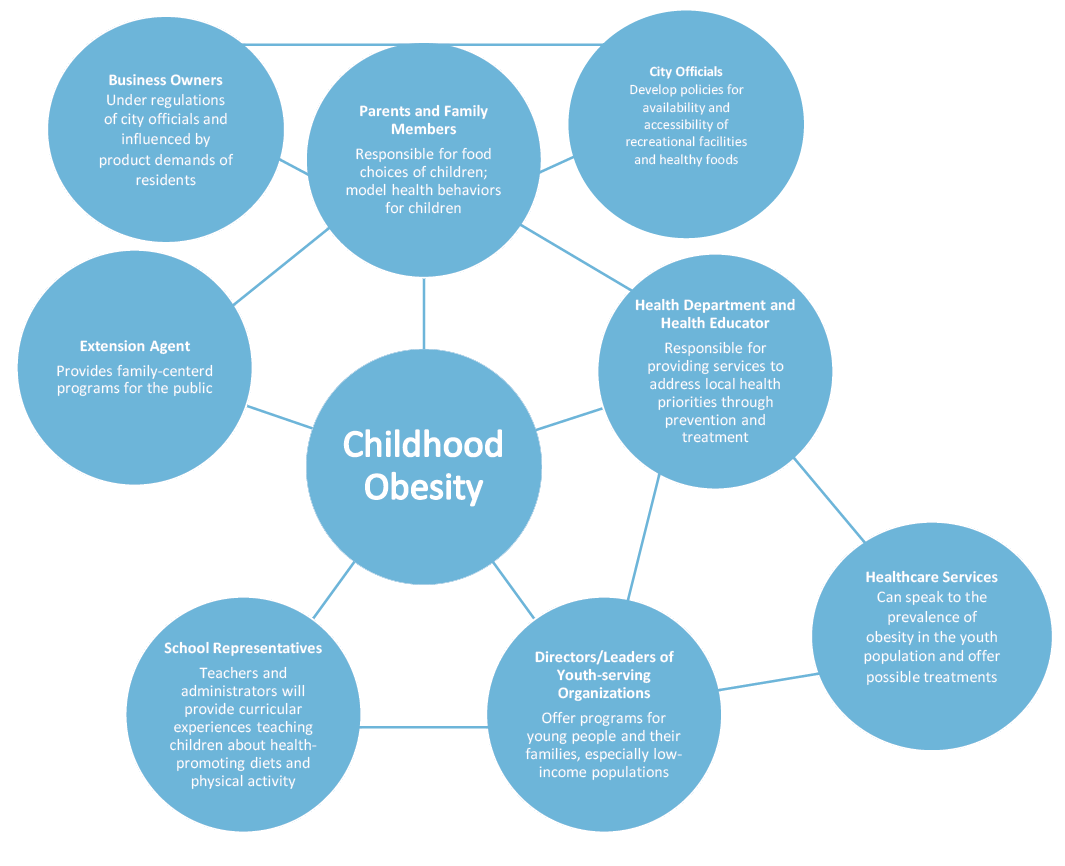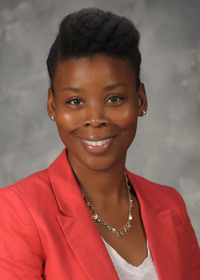Community Organizing to Develop Healthy Environments: A Web of Connections Activity
Introduction to the Web of Connections
This activity enables participants to recognize the interconnectedness of their professions and communities and the vital roles they each play in addressing key issues.
Groups and teams benefit from a variety of perspectives and insights. When each group member brings experiences and expertise to their group, the whole group or team emerges with a more complete and robust result or solution. This multidisciplinary approach helps groups solve problems in a more holistic and comprehensive way.
The Web of Connections exercise is designed to help participants better understand and visualize the relationships between their different areas of experience and expertise as it relates to their group or team’s purpose. This Web of Connections activity, regardless of the issue being addressed or the nature of the group, is a great way to get the creative and innovative juices flowing! This activity is suitable for groups 12 years of age and older.
Materials Needed
- A ball of yarn
- Scissors
- Signs/objects that represent academic disciplines, professions, social issues, resources, parts of systems, etc.
(See table below) - Space for participants to sit or stand in a circle
Instructions
- The facilitator will explain to participants the focus of the activity. Participants should collaborate and think critically on how the components or roles relate to each other.
- Form a circle so participants are facing one another.
- Give each individual one of the signs or objects that symbolize the perspective or issue they are to represent in the activity. This activity is ideal for groups of 12 but can be adapted for smaller or larger groups. If the group size is larger than the number of roles, have participants work in groups; if it is smaller, eliminate roles or have individuals play more than one role.
- Any participant can begin making connections; however, the facilitator may want to start to demonstrate how the activity should work.
- The first person or group will start with the ball of yarn and explain to everyone the details of their
assigned component/role (represented by the sign or object). - While holding onto the string, the first person will pass the ball of yarn to another person or group with
a sign or object. - The next person or group then will explain the details of their topic, as well as how theirs is connected to the group before them. The first connection of the web is now made.
- Continue to pass the ball of yarn until everyone has presented their connection, and then cut the string.
- *Note that participants can mention how their topic relates to several of the previously presented ones. For instance, the fourth component/role can be connected with the third, second, or first.
- Lastly, the audience may take the time to discuss the connection made during the activity. A few
examples of discussion questions include:- What other connections are possible that have not been made?
- What connections were the most obvious?
- What connections surprised you?
- How does this exercise influence your feelings about ______________________________________?
- Which additional roles or issues could be added to the web?
- Do you feel like more can be accomplished when groups/interdisciplinary teams are formed?
Why or why not? - How can the connections represented here today help solve problems? Could they complicate
issues even further? - How can you use what you learned during this activity?
Want to expand this activity and make it a multisession set of experiences?
If time permits, students can apply this activity to another specific topic area they are studying. Students may research components and/or professions within that area, and then lead their own Web of Connections activity. Another way to expand this activity is to host a follow-up discussion panel featuring professionals within the field. These additional activities can help students think more independently and gain a deeper perspective of the topic.
To help you facilitate your own Web of Connections activity, we have provided examples for the following topics:
- Community Organizing (MSU Extension Publication 3093)
- Global and Domestic Issues with Hunger (MSU Extension Publication 3136)
- Interprofessional Aspects of Healthcare (MSU Extension Publication 3137)
Each Web of Connections activity also includes an evaluation form for facilitators to obtain participants’ feedback.


Community Organizing to Develop Healthy Environments
Sample Scenario
Community Organizing to Address Childhood Obesity
Most recent estimates indicate one in five school-aged children (ages 6–19 years) is obese. Childhood obesity is the result of a combination of factors, such as genetics, social and physical environment, and dietary and physical activity behaviors. Understanding the complexity of this health outcome, efforts to address childhood obesity should include multidisciplinary perspectives and partnerships. With respect to young people and their health, parents, teachers, school administrators, and leaders of youth-serving community organizations, among others, may provide solutions to deleterious health outcomes.
Using the list of community members presented on page 5, we may identify the following connections:

Adapted From
https://www.cdc.gov/healthyschools/index.htm
https://www.cdc.gov/healthyschools/obesity/facts.htm
Role in Community |
Description |
|---|---|
|
Business owner |
Local business owners may support your changes by providing products or services for community residents. |
|
City government |
Policymakers within the community are responsible for representing the interests of community residents and ensuring their safety. Examples of city government representatives may include the following:
|
|
Community resident |
Members of the community, especially those who are directly impacted by the health issues you’re addressing, should be included to offer perspectives on their individual and family needs. |
|
Director/leader of community organization |
Administrative personnel who have responsibilities to provide services/resources to members of the community and represent—
|
|
Extension agent |
An Extension agent may have expertise in various areas, including agriculture and natural resources and family and consumer sciences. Additionally, the Extension agent serves as a resource to members of specific cities, towns, and counties. |
|
Healthcare service/hospital representative |
Representatives within healthcare service organizations and hospitals are familiar with the most prevalent health conditions and availability of services. |
|
Health department representative |
Health department representatives can work in local or state health departments and serve as resources for accurate and current health information and best practices for addressing health issues. |
|
Health educator |
The health educator assesses the needs of community residents and develops, implements, and evaluates programs designed to address the identified health needs. |
|
Grant writer |
A grant writer has expertise in seeking and securing funding opportunities to support programs within a community. |
|
Leader of religious organization |
Religious organizations are common places for community residents to gather. Additionally, such organizations and their leaders offer insight into the culture and value of community members. |
|
Researcher |
A researcher with expertise related to the selected issues can provide information on factors influencing the issues and best strategies to effectively address them. |
|
School representative |
School representatives are responsible for ensuring the health and safety of their students. Examples of school representatives may include the following:
|
Web of Connections Evaluation Survey
Workshop: Community Organizing to Develop Healthy Environments
Facilitator: _____________________________________________________________________________
Date: _________________________ County: ________________________________________________
Group participating in the activity: _______________________________________________________
Please indicate your response to each item:
Strongly Disagree (SD) | Disagree (D) | Neutral (N) | Agree (A) | Strongly Agree (SA)
This activity…
a. related to my needs.
b. was understandable.
Participating in this activity was worth my time.
I would recommend this activity to others.
My knowledge increased about how people are connected, in general.
My knowledge increased about how different healthcare fields are connected.
My understanding of how different healthcare fields can work together to improve patient outcomes has increased.
I will tell others what I learned through this activity about the interconnectedness of healthcare.
The most important thing I learned through this activity was:
One specific thing that I plan to use or apply as a result of this activity is:
Publication 3093 (POD-11-17)
By Brittney Oliver, PhD, Assistant Professor, Food Science, Nutrition, and Health Promotion; Victorian Tilley, Graduate Assistant, Food Science, Nutrition, and Health Promotion; David Buys, PhD, MSPH, CPH, Assistant Extension/Research Professor and State Health Specialist, Food Science, Nutrition, and Health Promotion; and Laura Brumbaugh-Robertson, Extension Agent, Tate County.
The Mississippi State University Extension Service is working to ensure all web content is accessible to all users. If you need assistance accessing any of our content, please email the webteam or call 662-325-2262.


